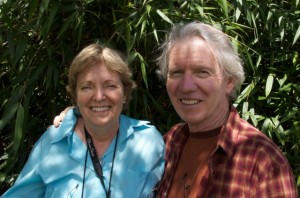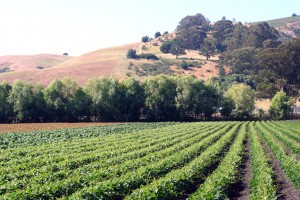Pescadero Grown market opens May 3 in Pescadero, May 8 in La Honda
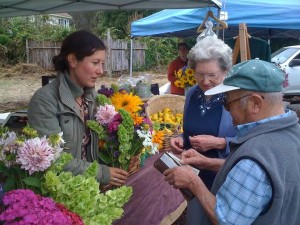
Fly Girl Farm & the Duartes
Since the hugely successful launch of Pescadero Grown! Farmers’ Markets in Pescadero and La Honda last year, South Coast shoppers have come to expect certain special qualities from their meat and produce. Fresh? Picked today. Local? The farms and ranches are within striking distance of Pescadero and La Honda, from Tunitas Creek Road to the San Mateo County line and over to Skyline Drive.
Affordable? Well. That’s where Puente comes in.
To help fill the gap and get more farm-direct produce into the hands of low-income neighbors, last year Puente and its many community partners created Friends of Pescadero Grown! a wooden token-based matching program for recipients of CalFresh and WIC, as well as other low-income participants living in Pescadero, La Honda, Loma Mar, and San Gregorio.
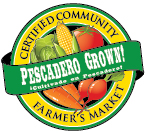 For the first time this year, low-income shoppers will not only be able to redeem their CalFresh and WIC Program benefits at the Pescadero and La Honda markets, they will also be able to enroll in the CalFresh (food stamps) program while shopping, thanks to support from the San Mateo County Human Services Agency. The CalFresh enrollment program will also be extended to the Coastside Farmers’ Markets in Half Moon Bay and Pacifica.
For the first time this year, low-income shoppers will not only be able to redeem their CalFresh and WIC Program benefits at the Pescadero and La Honda markets, they will also be able to enroll in the CalFresh (food stamps) program while shopping, thanks to support from the San Mateo County Human Services Agency. The CalFresh enrollment program will also be extended to the Coastside Farmers’ Markets in Half Moon Bay and Pacifica.
A separate program, funded through the California Farmer’s Market Consortium, will match CalFresh and WIC purchases up to $10 at each market. These funds can be spent on California-grown produce: fruits, vegetables, or nuts.
“A lot of people who work on the South Coast live on the Midcoast, and it’s crazy for certain benefits to only be available here,” says Puente Executive Director Kerry Lobel. “We’re happy to partner with Coastside Farmers Markets to create more support for farmers, as well as bring more healthy foods to farm workers and other low income residents.”
It’s not just farm workers who, ironically, have trouble affording produce they themselves may be growing, says Erin Tormey, founder of both Coastside Farmer’s Markets in Half Moon Bay and Pacifica. “A lot of times, even the farm owners are living on a wing and a prayer, especially the start-up farmer. Many of these small farmers would tell you that if they had to go shopping for their own produce, they couldn’t afford it.”
With margins that small, farmers are delighted to be able to sell their freshest produce to their neighbors each week. “We’re trying to be a community farm and serve just the very local community if possible. The idea is to avoid going ‘over the hill’ for resources,” says Kate Haas, who co-owns Echo Valley Farm in Loma Mar with her husband Jeff, and sells at the Pescadero Grown markets in La Honda and Pescadero.
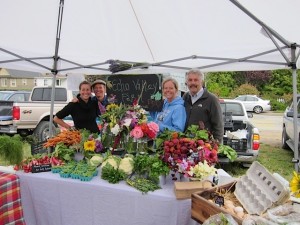
Echo Valley Farm
Echo Valley Farm grows carrots, beets, cauliflower, snap peas, fresh flowers and other delights on their 10-acre meadow, in the company of chickens, sheep, goats and pigs. This summer the farm will offer a CSA (community-supported agriculture) box of homegrown eggs, fruits and vegetables.
This year’s farmers markets will feature vendors in Pescadero and in La Honda, with an abundance of leafy vegetables, beans, meat, chicken, cheese, and fish, as well as cupcakes and fudge. As summer blooms, so too will the seasonal fruit selection.As summer blooms, so too will the seasonal fruit selection. “I like to say these vegetables sing. They’re all pretty and luscious – they’d make a believer out of anyone,” exclaims Lobel.
Both farmers’ markets will open much earlier this year – in early May rather than July, like last year – to optimize the season and give growers plenty of time to form a rapport with customers.
Puente is introducing changes in time and location as well. Both markets will run from 3 to 7 p.m. on Thursdays, to make it more convenient for local shoppers to drop by.
Finally, the Pescadero market will move across the street to 251 Stage Road, next to the Pescadero Country Store – where its bright displays and happy shoppers will be hard to miss.
For details about Pescadero Grown!, visit http://pescaderogrown.org/

